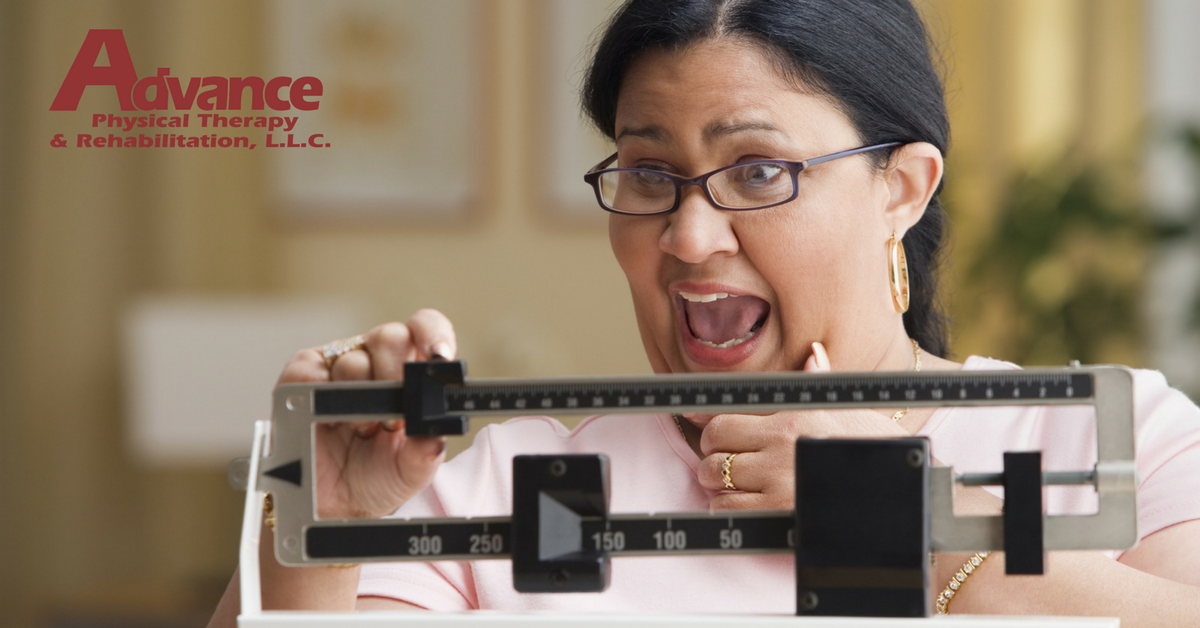OBESITY: More Good Reasons To Avoid The Epidemic
According to a survey sponsored by ABC News, USA Today, and Stanford University Medical Center, over 50 percent of Americans are spending their lives dealing with reoccurring and chronic pain. If you’re one of those people, you just might want to check your waistline.
The survey showed that while about half the participants could pinpoint a condition or injury as a cause of the pain, just as many couldn’t come up with a specific cause. Other research suggests that pain may be the result of excess pounds. Among the most common areas that those surveyed indicated as a source of pain is the knee.
A study reported in the Journal of Arthroscopic and Related Surgery looked at how a person’s weight affected how well they responded to treatment for osteoarthritis of the knee. The study specifically looked at how women between the ages of 30 and 55 responded to knee surgery since the condition is more common in women than in men. The study showed that women who were overweight were much more likely to report less satisfaction with the results of the surgery than women of normal weight. This was especially true in relationship to their ability to perform everyday physical activities, like walking and climbing stairs, and in their general attitude toward life.
Sadly, it’s not just adults who are suffering the ill effects of excess weight. More and more children are being classified as overweight and even obese. In fact, another study published in Pediatric Physical Therapy states that the number of children and teens who are overweight increased threefold between 1980 and 2000, and that number just continues to rise. Childhood obesity poses many risks. Among the many problems that may occur in obese children are:
- SPINAL ISSUES: Overweight children don’t develop enough spinal bone mineral content to support the extra weight they carry. This may lead to a weakening of the spine and increased incidence of back pain.
- HIP PROBLEMS: Children who are overweight are at greater risk for a condition called Slipped Capital Femoral Epiphysis, or SCFE, which occurs when the growing end of the femur (the thigh bone) slips from the hip socket. Overweight children may experience the condition more frequently because of the excess pressure placed on the hip joint.
- BLOUNT DISEASE: Blount disease is a disorder of the skeleton that causes the legs to bow. There are two types of Blount disease -infantile and adolescent. Studies have shown that obese infants (between one and three years of age) are much more likely to have Blount disease than are infants of normal weight. Adolescent Blount disease is also most prevalent in those who are overweight. In fact, approximately 90 percent of all reported cases occur in black males who are classified as morbidly obese.
- INCREASE IN BROKEN BONES: Obesity has also been linked to a higher rate of broken bones in children. Fractures are most common in children during growth spurts. Children who are overweight may not have sufficient bone development to withstand blows that wouldn’t cause breaks in children of normal weight. This may be because of a lack of physical activity, which helps increase bone density, or it may simply be because an overweight child falls harder than one who is not overweight.
Although we know that obesity is caused by overeating, it’s a challenge to reduce weight in a healthy manner without following proper exercise. Your physical therapist will be able to suggest exercises that you can safely perform to help strengthen your body while reducing your weight.

